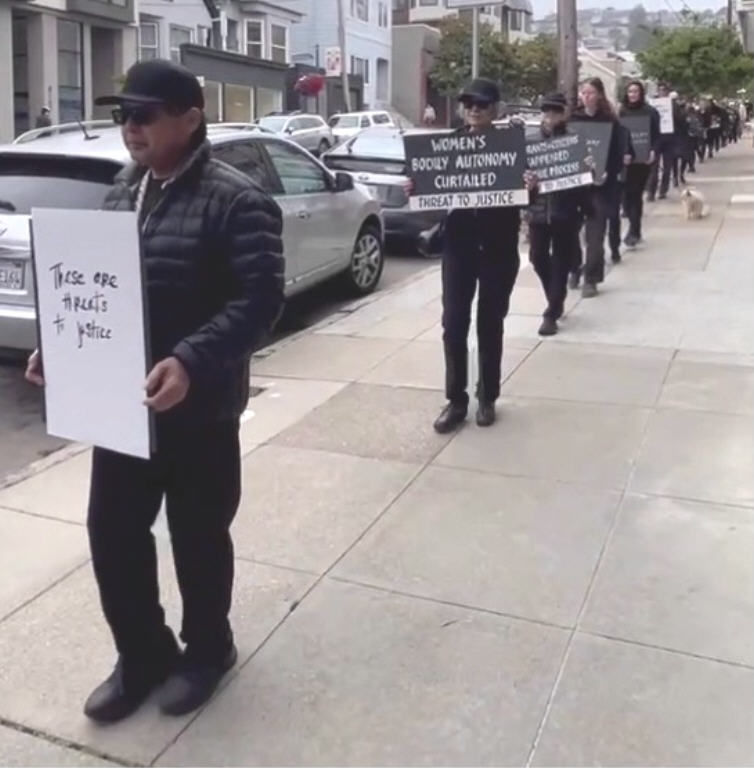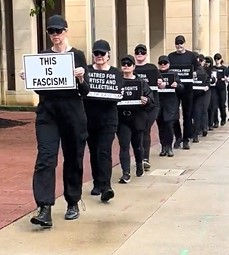FOUR MAGICAL CONTIGUOUS DAYS OF MUSICAL HEAVEN ! - Part I of II
- rhapsodydmb

- Jan 23, 2024
- 6 min read
Updated: Jan 23, 2024

Amit Peled,* cellist pictured on Sunday just past performed "Koi Nedrei Op. 47" (aka "All Vows") by German composer Max Bruch. The piece was among a program of otherwise American composers which was a good bit on the lighter side of "Koi Nedrei," as might have been fitting to dispel the raindrops of the day. Nonetheless, the small Community Church of Sebastopol, CA pews were filled.
Through the generosity of The Duchess' piano technician David Amendola, we attended and sat in the front row. David is a cellist himself. my preferred technician for The Duchess, and among many other things, also tunes and regulates Steinway concert pianos provided by ProPiano, such as used in this performance.
This was the fourth unique concert my partner and I attended in as many days. All of them were spectacular in some or many ways.
The Bruch piece is special. It has elements of or is based in folk music, and there are two main themes of Jewish origin.
"The first theme, which also lends the piece its title, comes from the Kol Nidre declaration, which is recited during the evening service on Yom Kippur. In Bruch's setting of the melody, the cello imitates the rhapsodic voice of the cantor who chants the liturgy in the synagogue.
The second subject of the piece is quoted from the middle section of Isaac Nathan's arrangement of 'O Weep for Those that Wept on Babel's Stream"' a lyric which was penned by Lord Byron in his collection Hebrew Melodies (which also includes the famous poem 'She Walks in Beauty'." (Wikipedia).
Included below is a video of the initial part of the piece played by Amit with his accompanist, Peter Miyamoto.
When I sent the piece to a musical friend, they could not listen on a particular celebratory day because they found it depressing; I do not.
Yes, I feel tears that rip one's heart out, but the piece is also consoling. It joins each of us in the pathos and struggles of life, but I also hear love that underlies our individual -- and community -- struggles. To that end, the piece is gorgeous and compelling.
I hope my readers listen and watch for12 minutes on YouTube (perhaps stop the video before the applause begins?) or for the minute below, to Bruch's piece. It's said to be Bruch's second most popular composition (the first is the Violin Concerto No. 1).
Before playing, Amit set the emotional mood by telling us that his own 19-year old daughter was just now in Israel, and he was reminded of news and photographs of the horrible fate of a similar 19-year old woman on October 7 when Hamas invaded Israel. Thus, he wanted to dedicate his performance to all the Israeli and Palestinian children and young people who had died or suffered and were still suffering.
What struck me was something I have never before encountered in a concert.
Throughout the piece, the audience sat spellbound. After the final note faded away, we audience members - in unison and like a gentle wave breaking on a shoreline - whispered a sigh.
I realized then that we had all been holding our collective breaths, at least for the coda.
Not only that, but no one moved after the musical echo faded. It was seemingly a minute or so (likely seconds) before soft applause started.
I had to make myself applaud, but I didn't want to. Somehow no applause seemed more respectful to the piece, composer, meaning, and musician.
Afterwards I was able to meet Amit (pictured above) and ask a burning question that is foremost in my mind these days, because I am re-taking Julliard Professor Now Kageyama's "Psych Essentials" class (which I completed exactly a year ago, and with many beneficial results).
I am engaged in a pre-class exercise to try four things. We start by selecting a 30-second segment of a piece then warming up at our instrument, but not playing the experiment's piece. Then we prepare to record videos. First, we play and focus solely on striking the right notes. Second, we still focus on our piano, but try to create a wider dynamic range. Third, we try to cast our mind away from hitting the right notes or some other technical issue we have chosen, to the far wall of the living room (or classroom) and fourth, we try to cast our mind toward filling the entire house (or school) with sound. Then we are to watch all videos and compare the results.
(For those curious, this experiment did not work well for me when the piece was not secure in my memory and fingertips, so I changed to playing an easier, more secure piece. On my second video experiment, I improved and could go longer (about 10-15 seconds of the 30 total seconds) thinking about the far wall, but then I starting striking wrong notes and my attention reverted to the keyboard. The same thing happened when I tried to fill the house with sound.
Nonetheless, I felt happier during the final two video experiments, plus noted that I played with a wider range of dynamics and nuance. Obviously I will repeat this experiment from time to time to see if I get better at this mind-refocusing or mind-control task, and with what results?)
Thus, what is on the mind as one performs, is foremost on my mind these days.
For Amit, it is exactly how I proceed to learn and play certain pieces, and amazingly by coincidence, exactly what Garreth Brooke, my piano teacher, told me today to try on both pieces I am learning (a short Farrenc Etude, and Tchaikovsky's "October" (aka "Autumn Song").
Amit said he researches the composer, that is, details of his or her life, what he or she (or musicologist) said about the composition, and various people in their lives. He notes the culture and time period of the piece. Then as he performs, he uses specific visual images to think about the piece as a whole, or when playing specific structural parts.
My teacher suggested that I now write out a scenario for all or parts of both of my pieces, and observe what happens to my performances before my next lesson.
I already think about and visualize a specific scenario every time I play through "Ivan's Tale" (aka "Andantino") by Khachaturian! And I've done it on a number of my other pieces as well.
With two artists recommending that I apply this strategy, I am convinced of the merit of doing so.
Reflecting on the miracle of music, experiencing musical community, the generosity of Amit to answer my question, the generosity of David in providing us with front-row seats and concert tickets, and my partner - through pounding rain - safely driving us to and from the concert we both enjoyed, I feel blessed.
***
Upon considering the October 2023 Hamas-Israel War’
(From the Advance Reader's Copy of "Vol. III Poetical Musings on Pianos, Music & Life")
The dam burst – yet again! – and
down
they
went,
the multitude of vegetables
and out
came gushing waters
flooding tiles of cracked linoleum,
just this morning mopped clean
but now inundated with wet –
(What’s that? I must ask.)
Their skins cracked open, they groan in despair,
Yet now they are flooding the deli and its stairs
Going down and down again straight into hell, it’s so clear.
The veggies they bled red with nary a prayer,
For what good would that do but repeat ad nauseum
Like Groundhog’s Day repeats with hardly a pauseum?
The farmer’s they grow just like exiles build
Again and again without guarantee
That one purchaser there’ll be or a market of buyers
Or that peace will ever come
...or they can trust their neighbors.
_______
*The concert was part of the 44th season of The Redwood Arts Council. Amit is a professor at the Peabody Institute at Johns Hopkins University and has toured widely in the US and Europe as well as in Puerto Rico. He is also a recording artist, and has performed using a cello once owned by Pablo Casals. The cello for this performance was made by well-known US cello maker Carl Becker.
###
(If you resonate with this blog, kindly consider signing our confidential
mailing list above.)




Comments